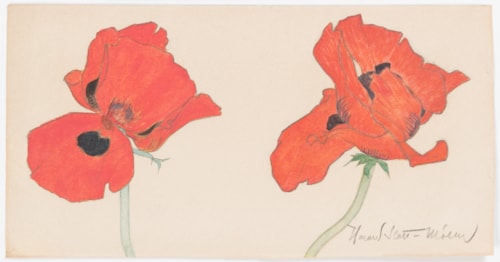
Harald SLOTT-MØLLER
Copenhagen 1864 - Copenhagen 1937
Biography
The son of a merchant, Harald Slott-Møller studied at the Royal Danish Academy of Fine Arts in 1883 before undertaking a three-year period of study with the painter Peder Severin Krøyer. He first exhibited his work in 1886 at the annual Spring Exhibition at the Kunsthal Charlottenborg, the exhibition gallery of the Danish Academy, and came to public attention two years later, when he showed a large genre painting of peasants in a Copenhagen doctor’s waiting room, entitled The Poor: The Waiting Room of Death, in which a powerful Social Realist commentary was readily evident. In the 1890s, influenced by Italian Gothic art and the work of the English painter Dante Gabriel Rossetti, Slott-Møller turned from Naturalism to a kind of restrained Symbolism, expressed in poetic landscapes populated by isolated figures of women. He also exhibited portraits, often of well-known figures in Danish artistic and literary circles, typified by a portrait of the critic and scholar Georg Brandeis lecturing at the University of Copenhagen, painted in 1890.
The artist’s wife Agnes Slott-Møller was likewise a painter, and both were founding members of the Danish artist’s association Den Frie Udstilling (The Free Exhibition), established in 1891 as an alternative to the Kunsthal Charlottenborg and still active today. Between 1902 and 1906 Harald Slott-Møller also worked as a designer of ceramics for the Danish faience factory Aluminia, while in 1917 he published a treatise on the importance of spirituality and Christianity in art. Although Harald was admitted as a Knight in the Danish chivalric order of the Dannebrog in 1919, the Slott-Møllers lived and worked in relative isolation from the artistic scene in Denmark from around 1910 until their deaths, just a few months apart, in 1937.


